Background:
Previously I made a comparison of driving with and without the engine compartment hood seal in place and with it removed.
That investigation was conducted during daily driving that included a good amount of stop-and-go.
Some recent comments about how once the vehicle is moving there is cooling air flowing through the engine compartment (not substantiated, only claimed to occur) prompted me to take another look at how the presence of the hood seal at the back of the engine compartment may affect the temperature within the engine compartment.
Test Procedure:
Temperature measurements are recorded at several locations:
- Turbocharger compressor outlet (T_Out)
- Intercooler outlet (IC_Out)
- Intake Manifold (IAT)
- Over the engine (OVR_Eng)
- Coolant temperature (Coolant)
- Oil temperature (Oil)
- Outside air temperature (OAT)
The GTI speed during the recording is identified as MPH.
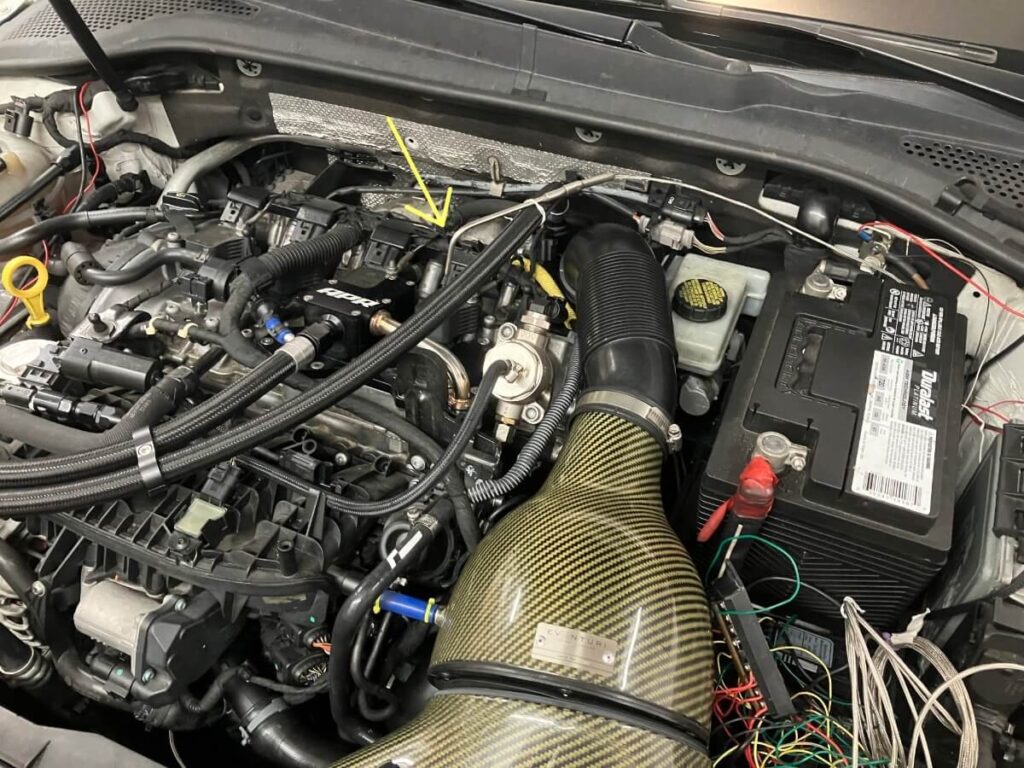
The temperature sensor over the engine is attached to a catch can line and suspended above the valve cover breather assembly. (Indicated with yellow arrow)
Note: The Eventuri intake only fills the driver’s side of the grill, this leaves the passenger side open so that air can flow into the engine compartment.
A route that makes a loop is driven which facilitates holding steady state speed and minimizes the speed changes.
The GTI is first driven around the route with the seal in place. For the first drive, the engine begins cold.
At the completion of the loop, the seal is removed and the loop is driven again.
Test Results:
Temperatures during the drive with the seal in place are shown on the chart:
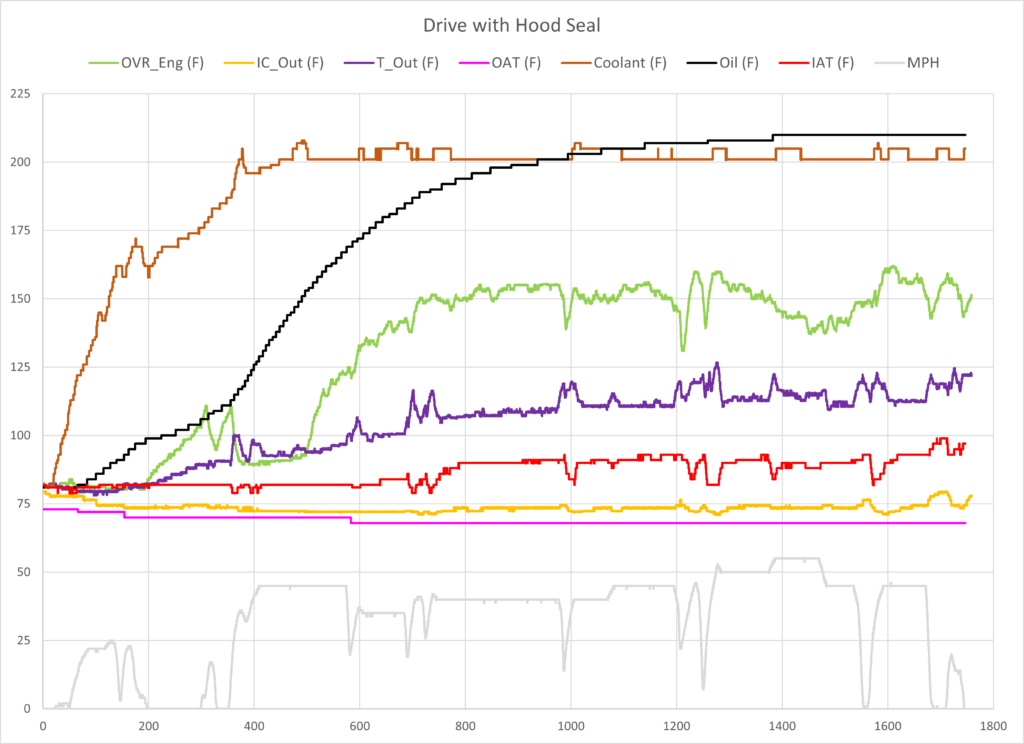
The temperature over the engine stabilizes at around 150 degrees Fahrenheit.
The second drive was conducted with the seal removed. These measures are indicated on the chart as NS (No seal).
Unfortunately, the data logger attached to the sensor over the engine failed to save the measurements and only partial data collection was made.
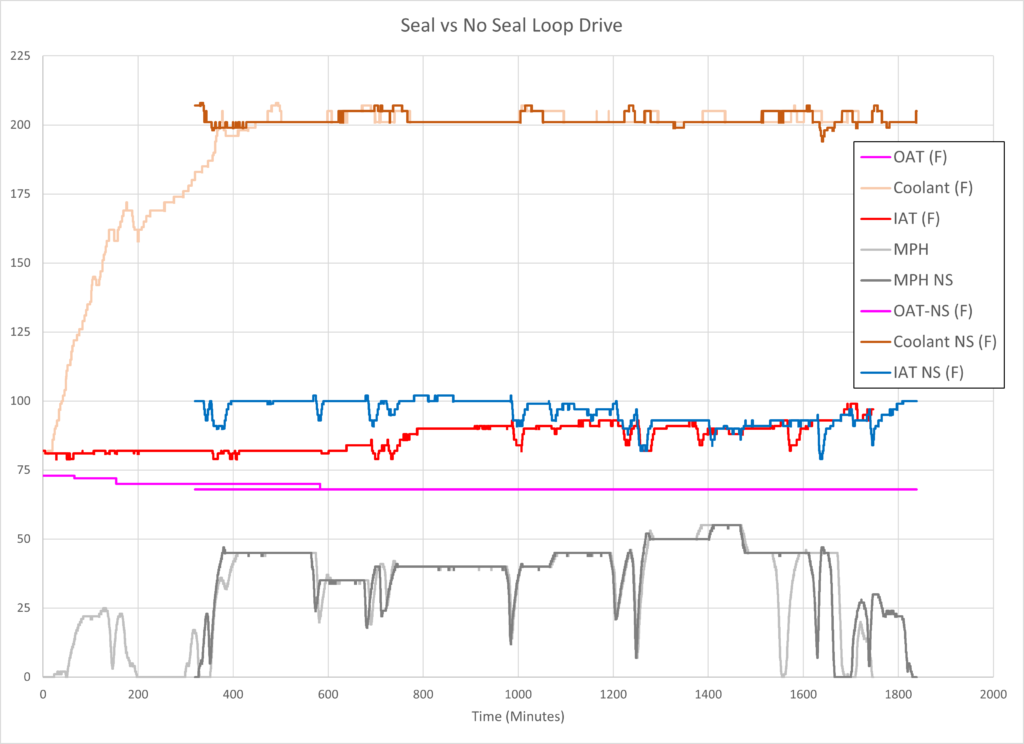
Additional measurements were made with the seal removed, but not over the planned route.

Note: Interestingly, just before time 1500, the vehicle begins a steady deceleration, and shortly thereafter the temperature over the engine drops 25 degrees F.
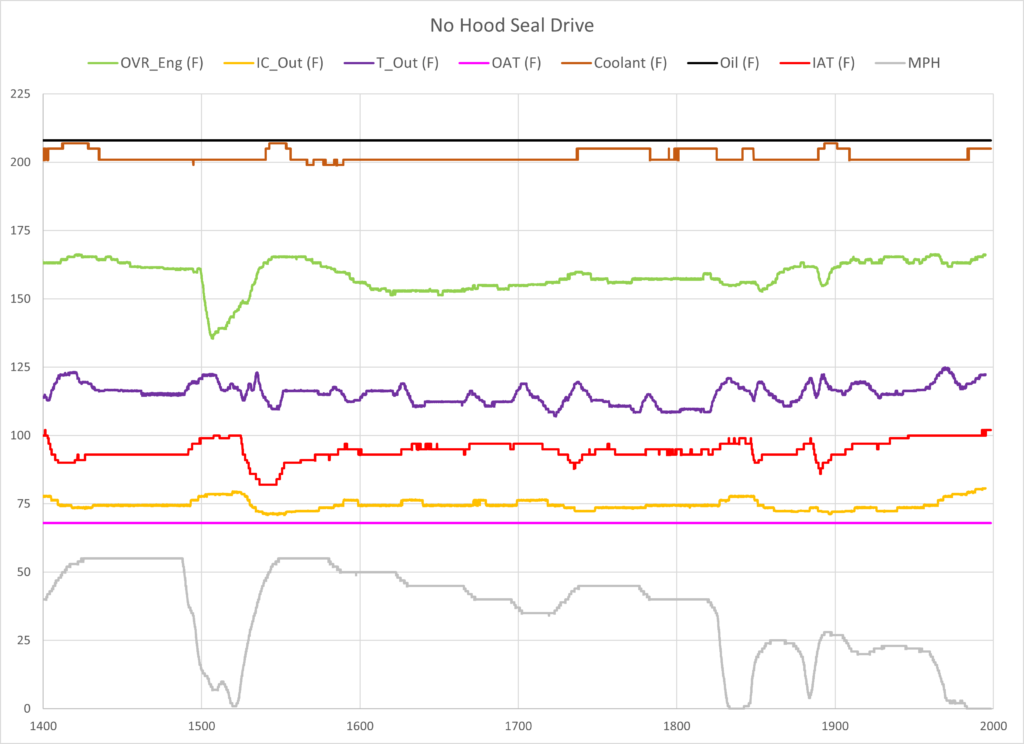
A second drive that included a stop was made. The stop is indicated by the break in the lines.
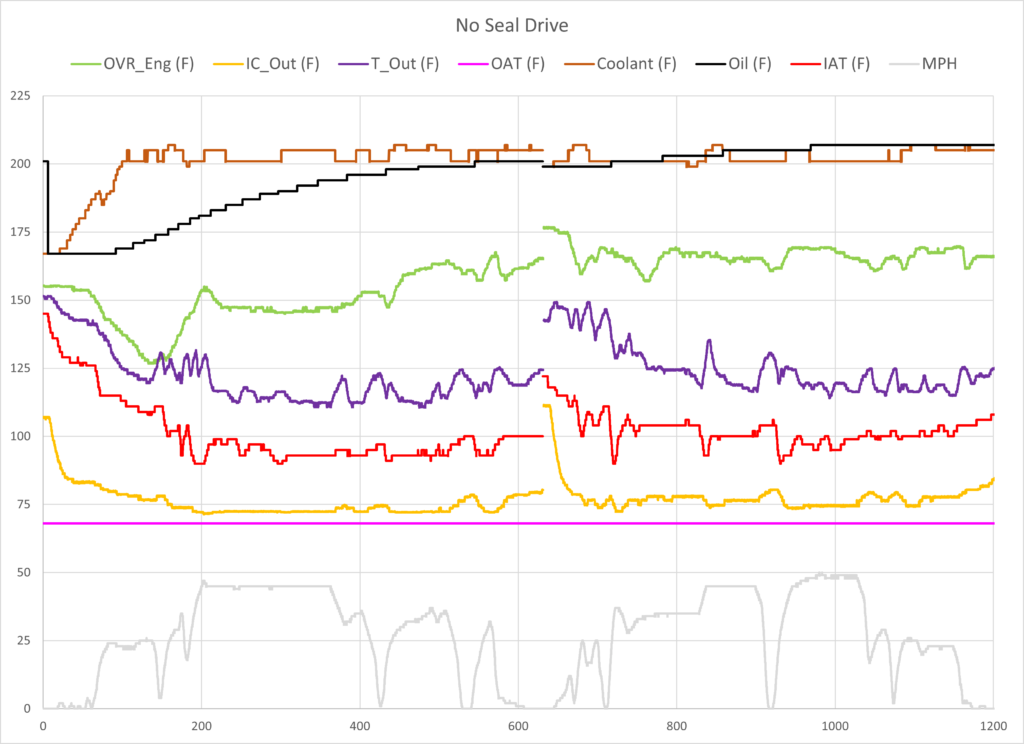
Conclusions:
The planned comparison of air temperature over the engine was unsuccessful due to equipment failing to record during the drive with the hood seal removed.
Additional driving without the hood seal at speeds similar to those of the planned route did not show lower air temperature above the engine compared to the drive with the hood seal installed.
The air temperature above the engine steadied out between 150 to 170 degrees Fahrenheit.
Speeds above 45 mph may produce a cooling effect that lowers the temperature above the engine. This test did not address cooling performance versus vehicle speed.
One more drive with the seal installed:

